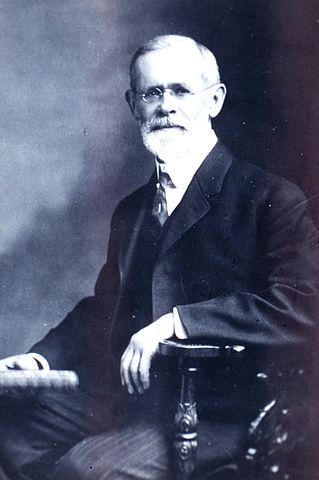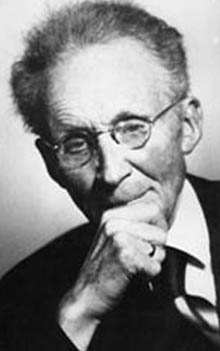A History of Weather Forecasting
Should I take an umbrella today? Will this years' crop be successful? What will this week's winning lottery numbers be? Knowing the future has long been a pursuit of humanity.
We know of attempts to forecast the weather as early as 650 B.C. in Babylonia. The development of accurate meteorological instrumentation during the Renaissance and the telegraph during the 1800s set the stage for modern meteorology to approach understanding the atmosphere through a physics-based approach. humanity.
The difficulty and time-consuming approach of manually calculating physics-based weather forecasts meant that practical forecasts were not possible in the early 20th Century. Thus, weather forecasting was one of the first tasks for early computers to tackle in the late 1940s. As computers have become more powerful and our knowledge of the atmosphere has improved, forecasts have become increasingly more accurate.
For a forecast to be useful, it must be given to the users and understood. Mobile phones and internet connectivity now mean that personalized weather forecasts and warnings can be delivered to wherever you are in easy-to-read formats!
Recipe for Making a Forecast
Around 1900, American meteorologist Cleveland Abbe and Norwegian physicist Vilhelm Bjerknes both recognized that the future weather could be predicted, just as the position of a falling object could be predicted by Newton's laws. To know the position of a falling object, one would need to know the initial position and initial velocity of the object, as well as the law of gravitation governing falling bodies. To make a weather prediction, Abbe and Bjerknes recognized that the current weather conditions over a large area must be known and that the laws of physics as applied to the atmosphere would be needed.


first imagined weather forecasting based on the laws of physics.
Sources:
By Mirth at ru.wikipedia (Transferred from ru.wikipedia) [Public domain], from Wikimedia Commons
By Pierre_cb (Vilhelm Bjerknes by NOAA) [Public domain], via Wikimedia Commons
As the information at these links above describe, we are faced with limited input data to our models, big data gaps over the oceans, and missing information inside clouds. Couple these problems with limited computer power and our incomplete understanding of some physical processes that are occurring in the atmosphere, and it would appear that we lack quite a bit of the essentials needed to make a weather forecast. Weather forecasts are never perfect, but they are certainly useful. They are right more often than they are wrong. Moreover, weather forecasts get more detailed, more accurate, and more useful each year.
Given all these limitations to the initial conditions and the model, that we can even forecast the weather at all is an amazing human accomplishment!
Air-Quality Forecasting
If weather forecasts are challenging, then forecasts of air chemistry and air quality are even more challenging. For an air-quality forecast to be useful, not only does the weather need to be well predicted, but the chemical reactions occurring amongst the gases in the atmosphere and on the water and ice particles in the clouds need to be understood and incorporated into the models.
Each chemical constituent in the atmosphere would need an equation describing its changes over time. Any chemical reaction involving these constituents would need an equation. The most basic chemistry models for the atmosphere have tens of chemicals and thousands of chemical reactions, and hence thousands of equations.
Not only do models have to include all these chemical reactions, but they need initial conditions, as well. These initial conditions consist of the concentration of trace gases, size and composition of solid aerosol particles suspended in the air, and the emission of pollutants. The problem is that these initial conditions needed to run a combined weather and chemistry model are less well known than for weather only.
For air-quality forecasting models, much more computer power is needed to calculate not only the weather, but the air quality, as well.
How Accurate are the ManUniCast Forecasts?
ManUniCast was designed as a tool for teaching, not as an operational forecasting system for creating the most accurate forecasts.
Because computer power is limited, we start with a coarsely gridded analysis (i.e., a set of initial conditions) arising from the Global Forecasting System (GFS) global model run by the NOAA National Weather Service of the United States. This data is freely available via the internet, courtesy of the National Weather Service. Small-scale details are not captured in this analysis. Therefore, we may miss important weather phenomena because they are not accounted for in our initial conditions. Garbage in…garbage out!
The European Centre for Medium-Range Weather Forecasts, the Met Office in the United Kingdom, and the National Weather Service in the United States all have sophisticated computer programs that collect many observations and assimilate them into their initial conditions with much more detail (i.e., smaller grid spacing to their analysis). Having these better initial conditions means that their forecasts should be better in general than those in ManUniCast.
Although the UK domain in ManUniCast is constructed from a grid of points spaced 4 km apart, which is quite detailed, the ManUniCast forecasts may not develop the weather in the right place at the right time. For example, although the occurrence of convective storms may be forecast in a general region like eastern England, their exact timing and location may not be forecast well. Such small-scale errors are common in weather forecast models of this scale. Users of this data need to recognize the inherent limitations in such forecast models.
On the other hand, large-scale weather patterns such as low-pressure systems, high-pressure systems, and fronts, will usually be forecast well within the 78-hour forecast period of ManUniCast. Experience with such models may indicate what kinds of weather features can be predicted well and those that can't be predicted well at all.
These pages are written for ManUniCast by David Schultz, Fiona Lomas, and Katy Mulqueen, University of Manchester. Photos and graphics are credited individually.
